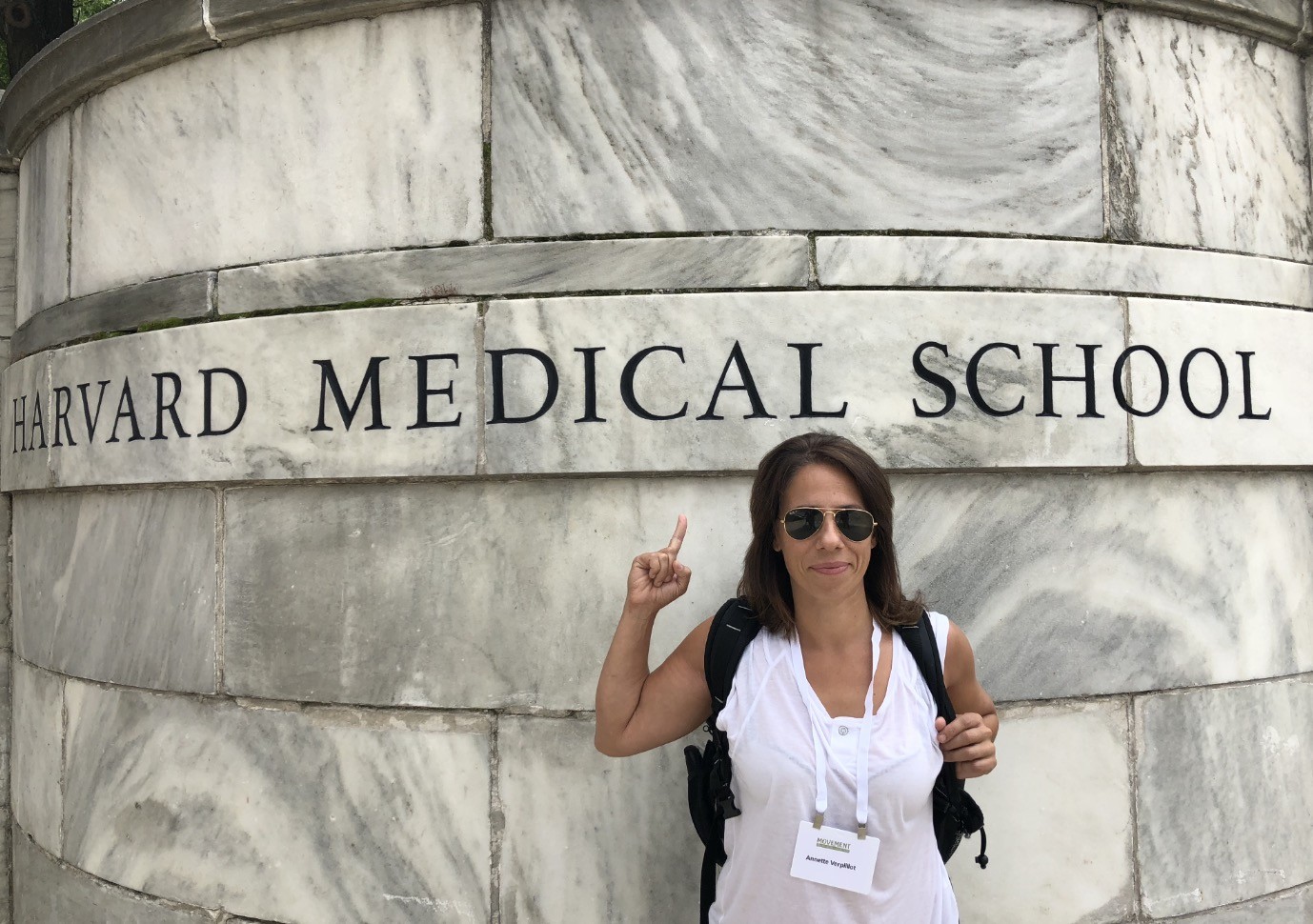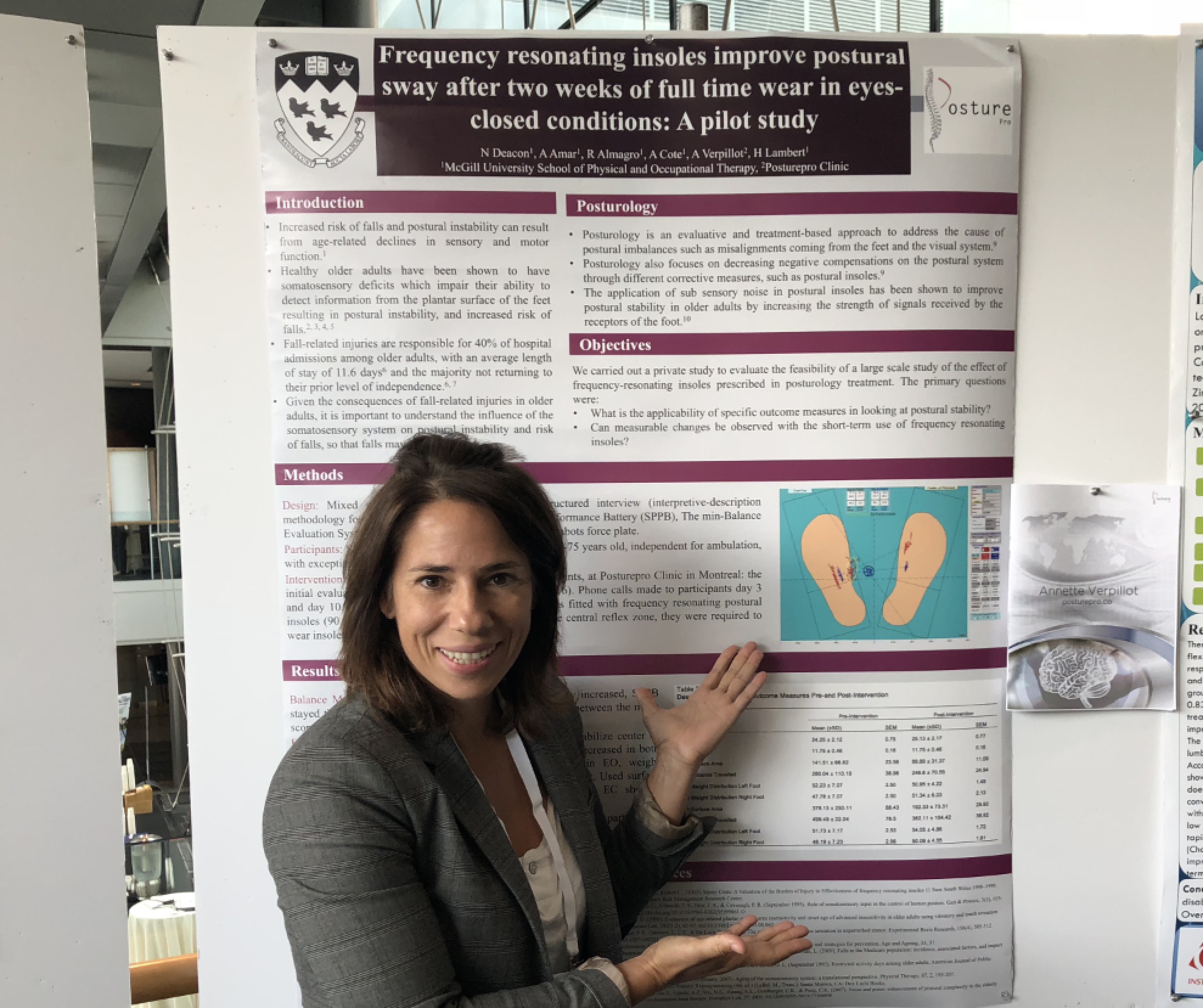I just got back from a truly remarkable conference in Boston where I had the opportunity to present Posturepro’s research conducted with McGill University.

In the meantime, I’d like to share with you some of the highlights of the conference.
This year’s International Movement Conference took place at Harvard Medical School, and this is an achievement in and of itself. 325 researchers and clinicians from around the world were presenting cutting-edge work, all centered on the key role movement plays in cognition, development and overall health. Thank you to Dr. Gerry Leisman and the organizing committee for putting such an important event together. I can’t wait until next year’s conference in Tel Aviv!
These were some of my favorite topics:
Cognitive-Motor Interactions in Human Development
Papers in this stream covered:
-fetal learning and imitation of movement
-maintenance of primitive reflexes and cognitive function
-development of movement synergies and cognitive interaction
-the importance of movement for learning
-neuroeducation in schools.
This work compliments very well what we teach in Module 3 & 4 about the integration of primitive reflexes and the role these reflexes play in the child’s postural system.
Motor-Cognitive Interaction in Sport
Papers in this stream covered:
-how robotics can simulate motor action
-coaching of motor tasks in augmented (virtual) reality
-the architecture of motor action
-motor expertise and the optimization of the elite athlete
-sport-movement and learning enhancement.
I can’t wait to include some of this new research in the sports performance sections of our Posturepro program. There is so much in store for the elite athlete thanks to research like this that links new technologies with a solid understanding of movement and neuromechanics of the body!

The resonant brain: How conscious seeing, hearing, feeling, and knowing regulate movement – Stephen Grossberg
Dr. Stephen Grossberg delivered an inspiring and multidisciplinary keynote address for the conference. Dr. Grossberg is Wang Professor of Cognitive and Neural Systems at Boston University and a founder of the fields of computational neuroscience, connectionist cognitive science, and neuromorphic technology. His work focuses upon the design principles and mechanisms that enable the behavior of individuals, or machines, to adapt autonomously in real time to unexpected environmental challenges.
He develops brain models of a variety of different cognitive processes, such as vision and visual object recognition, audition, speech, attentive learning, memory, etc. These models involve mapping multiple parts of the brain, and understanding how they work together. Modeling such processes ultimately helps us better understand the link between cognition and movement.
Find out more about Dr. Grossberg and listen to some of his lectures on his website!
Vestibular and balance sensorimotor training – M Jesús Jiménez
This was an amazing workshop where I learned some new variances to the exercises that we teach. It is great to see that other people are using similar techniques and looking into new applications. They’re even researching how vestibular and balance sensorimotor training can help people with Diabetes.
The impact of enhanced motor timing, vestibular integration and oculomotor efficiency on specific cognitive domains in addiction recovery – Michael S Trayford
Dr. Trayford has over 18 years of experience in private clinical practice. He is a Board-Certified Chiropractic Neurologist who has helped pave the way for the field of functional neurology. He is the Founder and Director of Clinical Operations of APEX Brain Centers, a clinical practice in Asheville, North Carolina. His multimodal Brain Intensive training and rehabilitation program uses neuroplasticity to help people improve their brain function. In his presentation, he discussed the impact of motor timing, vestibular integration and oculomotor efficiency on the brain, with a particular focus on how these skills can help addicts in recovery. It was fascinating to hear how we can use the brain and its neuroplasticity to fix the brain itself!
Direction modulation of muscle synergies in a hand-reaching task – Sharon Israely
Did you know that some basic movement patterns in neonates are retained through development?
Take a look at these patterns in this video:
He focused on a hand-reaching task, but also provided this example of the walking baby to show that muscle synergy exists at a very young age. Stepping behavior in neonates is actually a primitive reflex controlled by brainstem mechanisms.
The basic patterns of stepping are retained from this infancy period through development, only to be augmented by new patterns that develop during the toddler stage.
Light and the sensate moving body – Stephen Auger and Martha Eddy
This was a workshop collaboration between Dr. Martha Eddy and visual artist Stephen Auger. Auger’s work Iris explores how color, light, and touch affect the sensing body. Dr. Eddy shows how closing the eyelids and deep breathing can incite the nervous system to produce alpha brain waves. These brain waves enhance flow, creativity, and body awareness. According to Eddy, Auger’s work brings together somatic awareness and perceptional experience. This is where art and science meet everyone – in the brain!
She also stressed how bad blue light is for the body after sundown. It signals to the brain that it is still daytime, which deregulates the body’s circadian clock. Be sure to turn off your screens and phones for as long as possible before going to sleep!
Parallels in brainstem, motor and autonomic development and their relationship to hemispheric integrative function – Robert Melillo
I was so excited to get to hear Dr. Robert Melillo’s keynote talk. He is the author of many books that provide solutions for children with Autism, ADHD, Dyslexia, and other neurological disorders. Dr. Melillo has developed a Brain Balance program that offers a drug-free alternative for afflicted children. In his talk, he explained that it is the poor integration of primitive reflexes that leads to brain imbalance and the proliferation of these disorders.
Check out the Youtube series where Dr. Robert and Carolyn Melillo work with families, directly in their homes, to get impressive results! I highly recommend both seasons!
Dr. Andrew Campbell works with patients who have symptoms that cannot be cured or explained. He is an expert on the effects of harmful substances and toxicity on the body, proposing scientific-based natural alternatives to medication. In this talk, Dr. Campbell went beyond the common knowledge that food intake and gut health are directly related to brain health. He explained that only 10% of ingested probiotics make it to the colon. The rate of absorption of antioxidants is astoundingly low for oral probiotics. The alternative he proposes, Bacillus spores as a probiotic, produces a variety of antioxidants directly in the digestive system – where they can best be absorbed efficiently by the body. Check out the website here!
There’s an app for that!
Do you have trouble sleeping? Do you want to focus more on your breathing? Need some meditation tips? This free app can help with kinematics, breathing and movement, and focus. Step into the Void – literally – and decrease your stress levels, boost your productivity, and maximize your rest.
Check it out here: https://void.com.hk/en/
My favorite quote from the conference:
“Where the mind is without fear and the head is held high, where knowledge is free. Where the world has not been broken up into fragments by narrow domestic walls […]”
― Nobel Prize Winner Rabindranath Tagore, Gitanjali
Learn more →
Boost your Performance

Intro to Posturology
Listen to the Posturology Podcast ↓
Schedule a Call
Don’t be shy. Let us know if you have any questions!
Book an Online Consult
Do you suffer from chronic pain or recurrent injuries? Do you want to optimize your performance at the gym and prevent the negative effects of aging? Discuss your issues with our expert Posturologist and start working towards a better you.


